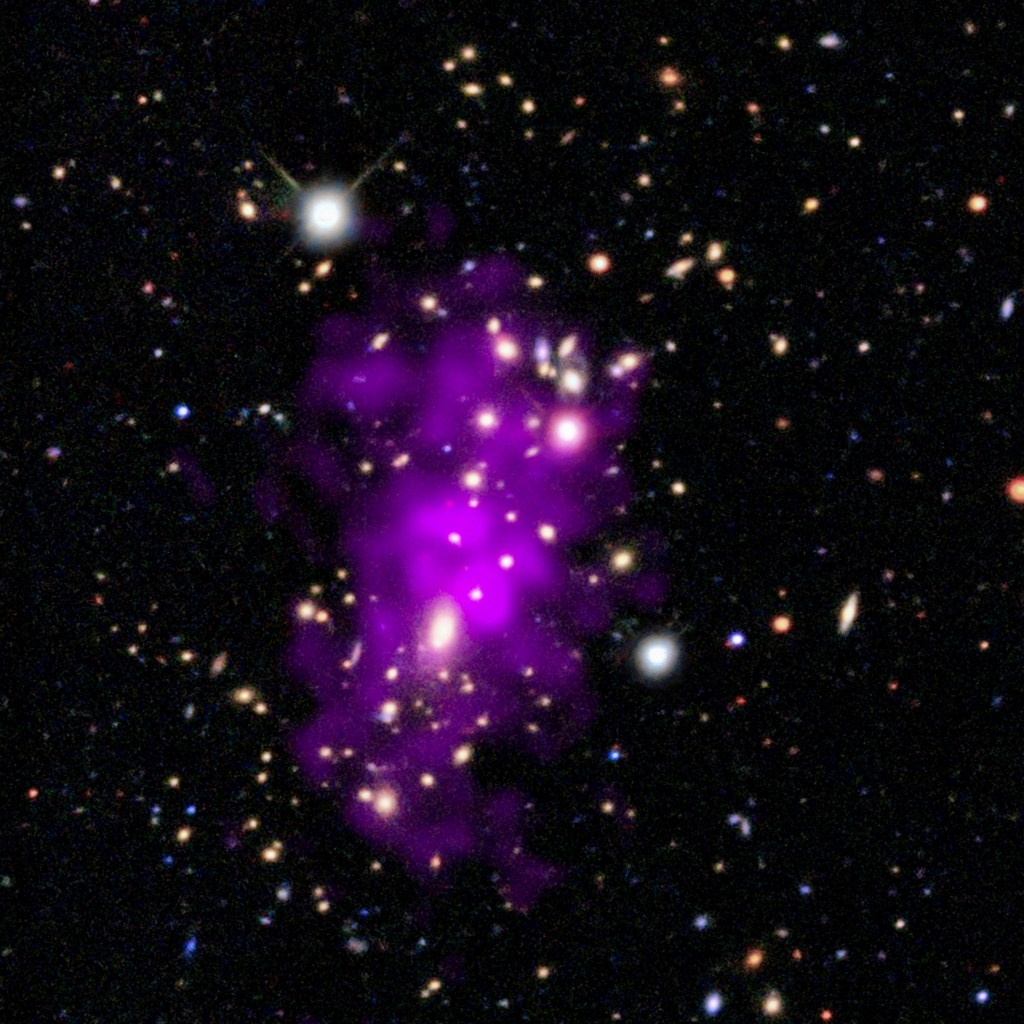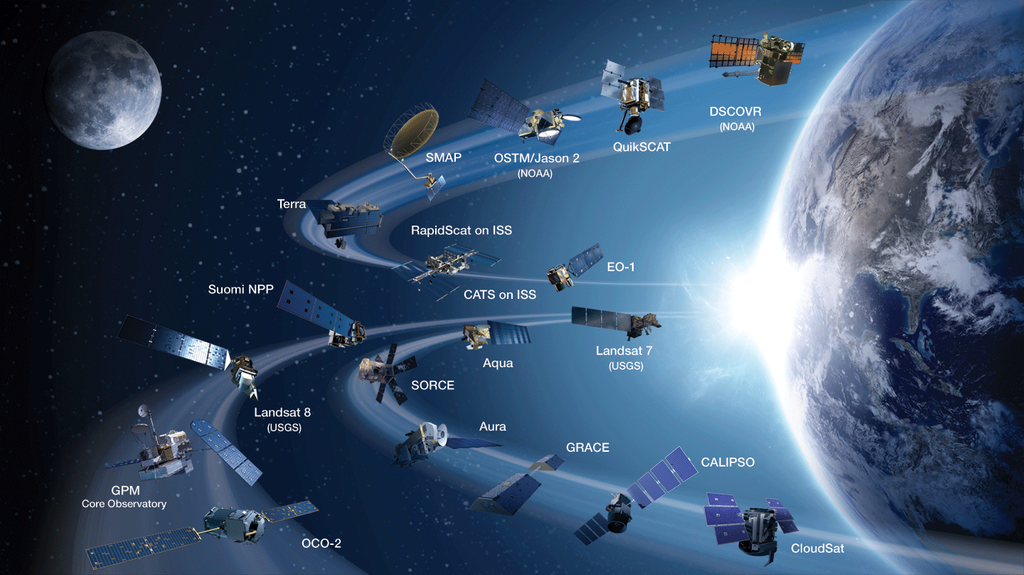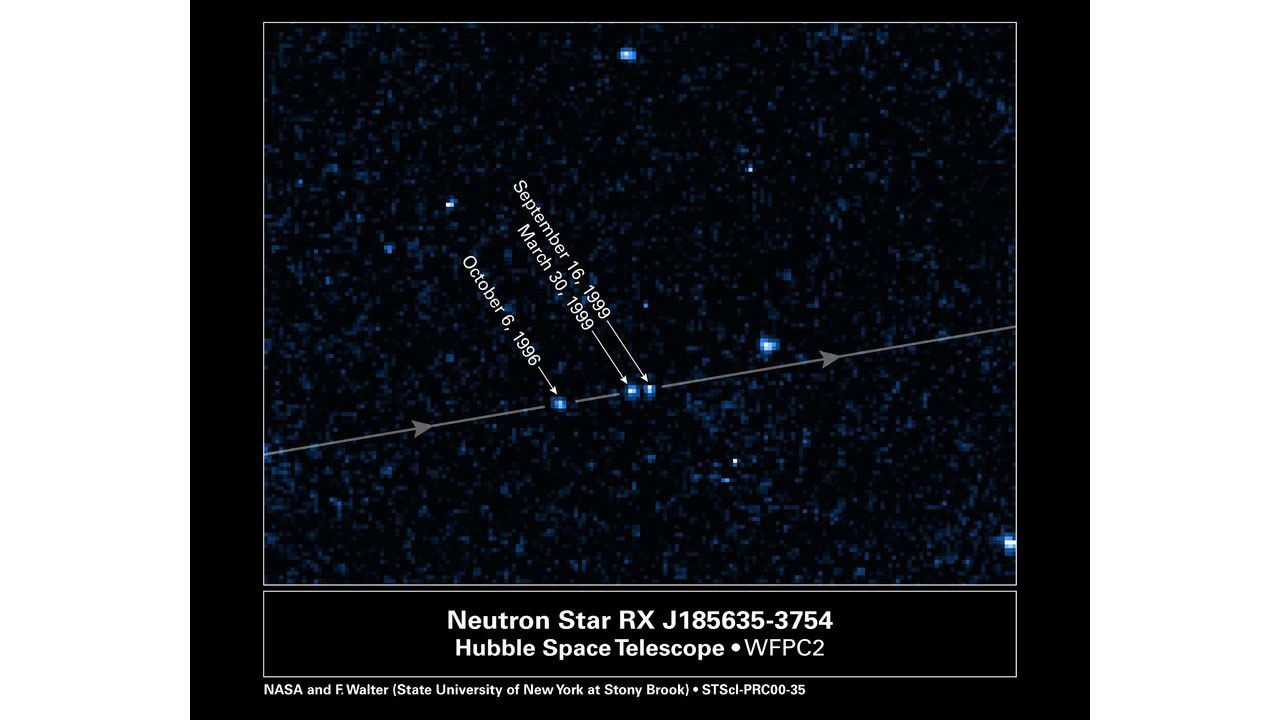It's as big as Manhattan Island, is 10 trillion times denser than steel and is hurtling our way at speeds over 100 times faster than a supersonic jet. An alien spaceship? No, it's a runaway neutron star, called RX J185635-3754, forged in a stellar explosion that would have been visible to our distant ancestors in 1 million B.C.
Precise observations made with NASA's Hubble telescope confirm that the interstellar interloper turns out to be the closest neutron star ever seen. Now located 200 light-years away in the southern constellation Corona Australis, it will swing by Earth at a safe distance of 170 light-years in about 300,000 years. A light-year is the distance traveled by light in a full year (about 6 trillion miles).
Because it is the closest neutron star ever seen and its distance has been well established by Hubble, astronomers can compare stellar theories against a variety of its physical properties such as size, inherent brightness, and true age.
Since the object has no companion star that would affect its appearance, this discovery will allow future astronomers to more easily confirm stellar theories. The results are being presented today at the 2000 meeting of the American Astronomical Society's High Energy Astrophysics Division (HEAD) in Honolulu, HI.
"The scientific importance of this object lies in the fact that the neutron star is isolated," says Frederick M. Walter of the State University of New York (SUNY), in Stony Brook, NY. "It appears to be hot, not because it is accreting hydrogen gas as it moves through space, but because it is still young and cooling off. Since we know its approximate age, we can test how fast neutron stars cool off. Because this is the closest and brightest of the few known isolated neutron stars, it is the easiest to study and is an excellent test bed for nuclear astrophysical theories."
The neutron star's wayward trajectory was caught in three Hubble snapshots taken in 1996 and 1999. The three Hubble images show that the star moves across the sky with a characteristic apparent "wobble" (a reflection of the Earth's own orbital motion, an effect called parallax), which is expected of an object located about 200 light-years away.
In addition, the observations reveal that the neutron star is streaking across the sky from west to east at a rate of 1/3 of an arc second per year. (An arc second is a unit of angular measure. There are 3,600 arc seconds in a degree and 360 degrees in a full circle.) In 5,400 years, RX J185635-3754 travels a distance equal to the diameter of the Moon. Although this apparent motion may seem slow, it is actually one of the fastest moving stars in the sky. The fastest, Barnard's star, moves 10 arc seconds each year). The apparent motion, combined with the distance, means that the neutron star is moving at a speed of about 240,000 miles per hour (389,000 kilometers per hour).
This neutron star may be approaching from a grouping of young stars in the constellation Scorpius. About 1 million years ago, a massive star in a binary star system exploded as a supernova, releasing its companion star, an ultra-hot, blue star now known as Zeta Ophiuchi, which is also zooming away from the region. Because 1 million years ago the neutron star and Zeta Ophiuchi were in about the same location in space, the neutron star may be the remnant of the original binary companion of Zeta Ophiuchi, the star which exploded.
The runaway neutron star was first reported in 1992, when astronomers detected a very bright source of X-ray emission with the Roentgen Satellite (ROSAT). Because it was not seen in optical light and appeared to be within 500 light-years of the Earth, Walter and S.J. Wolk (Stony Brook) and R. Neuhaeuser (Max-Plack-Institut fuer Extraterrestrische Physik) surmised that it was likely to be a neutron star, a hot, dense stellar corpse with a six-mile radius.
Four years later, Stony Brook astronomers Walter and L.D. Matthews reported the optical identification of the star using the Hubble telescope. The object is very faint (26th magnitude or about 20 billion times fainter than the bright star Vega), and has a blue color. The blue color indicates that the object is hot, as expected from the bright X-ray emission. The temperature is about 1 million degrees Fahrenheit (600,000 degrees Kelvin). In September 2000, images taken with the European Southern Observatory's Very Large Telescope showed a small, cone-shaped "bowshock" in front of the neutron star, created as the star plowed through interstellar space.
The Hubble results have been accepted for publication in the Astrophysical Journal.
BACKGROUND INFORMATION: NEUTRON STARS
A neutron star is the densest known object in the universe, with the mass of about 1.4 Suns packed into a sphere about 12 miles (20 kilometers) across. Its density is about the same as a bare atomic nucleus. It is a stellar corpse, formed during a supernova explosion. When a massive star (more than about 8 times the mass of the Sun) explodes, its core implodes forming a very dense state of matter. On Earth or in the Sun, most of the volume of atoms is occupied by clouds of electrons. In neutron star matter, the electrons are squeezed into the protons (forming neutrons), allowing the matter to be condensed by about a factor of 100,000 (a one thousand trillion times reduction in volume). These neutron stars are born hot, and most appear to be born with strong magnetic fields and rotate very rapidly.
If we could see the thermal emission from the surface of a neutron star, we could determine its radius, temperature, and what it was made of. This would permit tests of theories of the structure of neutron stars and would let astronomers probe the characteristics of the densest stable state of matter known. About 1,500 neutron stars are now known, but most are pulsars (highly magnetized rapid rotators). The rest reside in close binary systems called X-ray binaries, where they emit X-rays as they accrete matter from their companions. In the pulsars and accreting sources, the surface emission is swamped by emission from other sources (such as the magnetosphere in a pulsar and the mass accretion process in the binaries). Only in an isolated neutron star can we measure the details of its surface, much as astronomers would study any star in the sky.
Of the isolated, non-pulsing neutron stars now known, RX J185635-3754 is the nearest and brightest. Hence, it is an excellent test bed for studies of the physics of neutron stars.
Why RX J185635-3754 is not a pulsar, despite its young age, is not yet known.
































